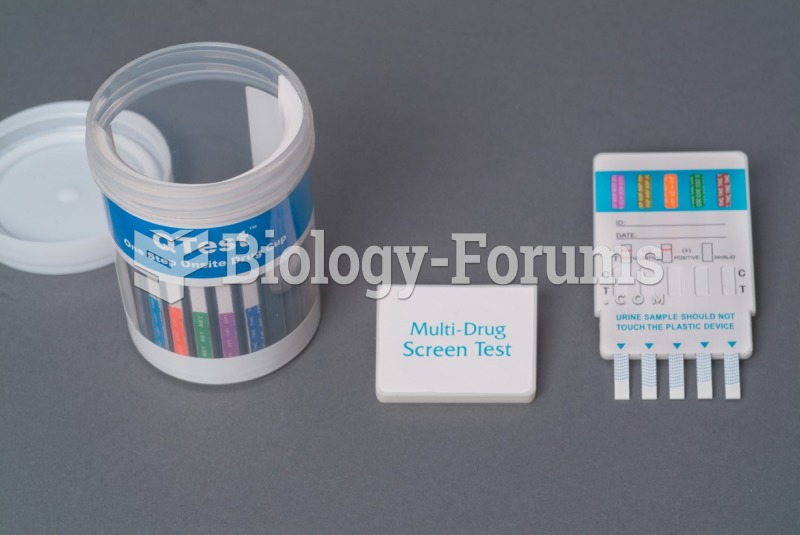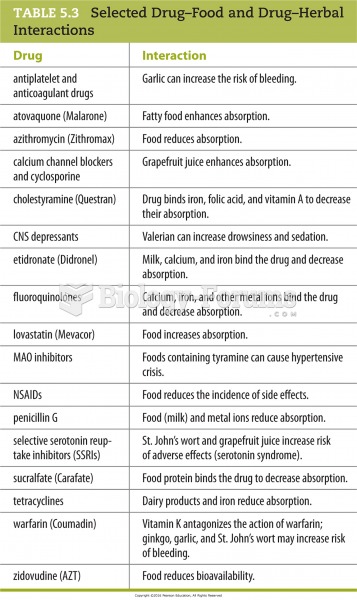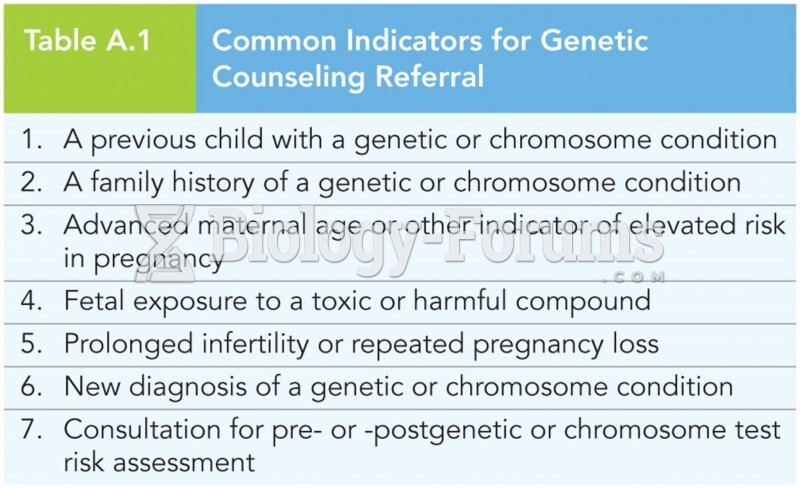This topic contains a solution. Click here to go to the answer
|
|
|
Did you know?
The word drug comes from the Dutch word droog (meaning "dry"). For centuries, most drugs came from dried plants, hence the name.
Did you know?
It is difficult to obtain enough calcium without consuming milk or other dairy foods.
Did you know?
In women, pharmacodynamic differences include increased sensitivity to (and increased effectiveness of) beta-blockers, opioids, selective serotonin reuptake inhibitors, and typical antipsychotics.
Did you know?
Everyone has one nostril that is larger than the other.
Did you know?
People with high total cholesterol have about two times the risk for heart disease as people with ideal levels.







